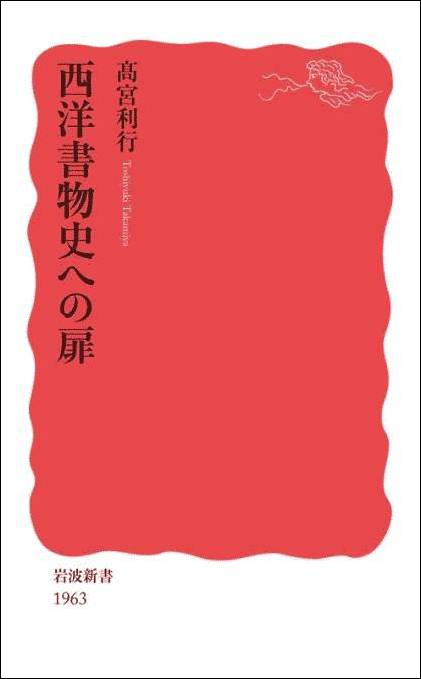2023-09-24 Sun
■ #5263. 10月7日(土),朝カルのシリーズ講座「文字と綴字の英語史」の第3回「中英語の綴字 --- 標準なき繁栄」 [asacul][notice][writing][spelling][orthography][me][standardisation][me_dialect][norman_conquest][link][voicy][heldio]
約2週間後の10月7日(土)の 15:30--18:45 に,朝日カルチャーセンター新宿教室にてシリーズ講座「文字と綴字の英語史」の第3回となる「中英語の綴字 --- 標準なき繁栄」が開講されます.

今回の講座は,全4回のシリーズの第3回となります.シリーズのラインナップは以下の通りです.
・ 第1回 文字の起源と発達 --- アルファベットの拡がり(春・4月29日)
・ 第2回 古英語の綴字 --- ローマ字の手なずけ(夏・7月29日)
・ 第3回 中英語の綴字 --- 標準なき繁栄(秋・10月7日)
・ 第4回 近代英語の綴字 --- 標準化を目指して(冬・未定)
これまでの2回の講座では,まず英語史以前の文字・アルファベットの起源と発達を確認し,次に古英語期(449--1100年)におけるローマ字使用の実際を観察してきました.第3回で注目する時期は中英語期(1100--1500年)です.この時代までに英語話者はローマ字にはすっかり馴染んでいましたが,1066年のノルマン征服の結果,「標準英語」が消失し,単語の正しい綴り方が失われるという,英語史上でもまれな事態が展開していました.やや大げさに言えば,個々の英語の書き手が,思い思いに好きなように単語を綴った時代です.これは秩序崩壊とみればネガティヴとなりますが,自由奔放とみればポジティヴです.はたしてこの状況は,後の英語や英語のスペリングにいかなる影響を与えたのでしょうか.英語スペリング史において,もっともメチャクチャな時代ですが,だからこそおもしろい話題に満ちています.講座のなかでは中英語原文も読みながら,この時代のスペリング事情を眺めてみたいと思います.
講座の参加にご関心のある方は,ぜひこちらのページよりお申し込みください.対面のほかオンラインでの参加も可能です.また,参加登録された方には,後日見逃し配信としてアーカイヴ動画へのリンクも送られる予定です.ご都合のよい方法でご参加ください.全4回のシリーズものではありますが,各回の内容は独立していますので,単発でのご参加も歓迎です.
本シリーズと関連して,以下の hellog 記事,および Voicy heldio 配信回もご参照ください.
[ 第1回 文字の起源と発達 --- アルファベットの拡がり ]
・ heldio 「#668. 朝カル講座の新シリーズ「文字と綴字の英語史」が4月29日より始まります」(2023年3月30日)
・ hellog 「#5088. 朝カル講座の新シリーズ「文字と綴字の英語史」が4月29日より始まります」 ([2023-04-02-1])
・ hellog 「#5119. 朝カル講座の新シリーズ「文字と綴字の英語史」の第1回を終えました」 ([2023-05-03-1])
[ 第2回 古英語の綴字 --- ローマ字の手なずけ ]
・ hellog 「#5194. 7月29日(土),朝カルのシリーズ講座「文字と綴字の英語史」の第2回「古英語の綴字 --- ローマ字の手なずけ」」 ([2023-07-17-1])
・ heldio 「#778. 古英語の文字 --- 7月29日(土)の朝カルのシリーズ講座第2回に向けて」(2023年7月18日)
・ hellog 「#5207. 朝カルのシリーズ講座「文字と綴字の英語史」の第2回「古英語の綴字 --- ローマ字の手なずけ」を終えました」 ([2023-07-30-1])
[ 第3回 中英語の綴字 --- 標準なき繁栄 ](以下,2023/09/26(Tue)の後記)
・ heldio 「#848. 中英語の標準なき綴字 --- 10月7日(土)の朝カルのシリーズ講座第3回に向けて」(2023年9月26日)
2023-07-30 Sun
■ #5207. 朝カルのシリーズ講座「文字と綴字の英語史」の第2回「古英語の綴字 --- ローマ字の手なずけ」を終えました [asacul][writing][grammatology][alphabet][notice][spelling][oe][literature][beowulf][runic][christianity][latin][alliteration][distinctiones][punctuation][standardisation][voicy][heldio]
先日「#5194. 7月29日(土),朝カルのシリーズ講座「文字と綴字の英語史」の第2回「古英語の綴字 --- ローマ字の手なずけ」」 ([2023-07-17-1]) でご案内した通り,昨日,朝日カルチャーセンター新宿教室にてシリーズ講座「文字と綴字の英語史」の第2回となる「古英語の綴字 --- ローマ字の手なずけ」を開講しました.多くの方々に対面あるいはオンラインで参加いただきまして感謝申し上げます.ありがとうございました.
古英語期中に,いかにして英語話者たちがゲルマン民族に伝わっていたルーン文字を捨て,ローマ字を受容したのか.そして,いかにしてローマ字で英語を表記する方法について時間をかけて模索していったのかを議論しました.ローマ字導入の前史,ローマ字の手なずけ,ラテン借用語の綴字,後期古英語期の綴字の標準化 (standardisation) ,古英詩 Beowulf にみられる文字と綴字について,3時間お話ししました.
昨日の回をもって全4回シリーズの前半2回が終了したことになります.次回の第3回は少し先のことになりますが,10月7日(土)の 15:00~18:45 に「中英語の綴字 --- 標準なき繁栄」として開講する予定です.中英語期には,古英語期中に発達してきた綴字習慣が,1066年のノルマン征服によって崩壊するするという劇的な変化が生じました.この大打撃により,その後の英語の綴字はカオス化の道をたどることになります.
講座「文字と綴字の英語史」はシリーズとはいえ,各回は関連しつつも独立した内容となっています.次回以降の回も引き続きよろしくお願いいたします.日時の都合が付かない場合でも,参加申込いただけますと後日アーカイブ動画(1週間限定配信)にアクセスできるようになりますので,そちらの利用もご検討ください.
本シリーズと関連して,以下の hellog 記事をお読みください.
・ hellog 「#5088. 朝カル講座の新シリーズ「文字と綴字の英語史」が4月29日より始まります」 ([2023-04-02-1])
・ hellog 「#5194. 7月29日(土),朝カルのシリーズ講座「文字と綴字の英語史」の第2回「古英語の綴字 --- ローマ字の手なずけ」」 ([2023-07-17-1])
同様に,シリーズと関連づけた Voicy heldio 配信回もお聴きいただければと.
・ heldio 「#668. 朝カル講座の新シリーズ「文字と綴字の英語史」が4月29日より始まります」(2023年3月30日)
・ heldio 「#778. 古英語の文字 --- 7月29日(土)の朝カルのシリーズ講座第2回に向けて」(2023年7月18日)
2023-07-17 Mon
■ #5194. 7月29日(土),朝カルのシリーズ講座「文字と綴字の英語史」の第2回「古英語の綴字 --- ローマ字の手なずけ」 [asacul][notice][writing][spelling][orthography][oe][link][voicy][heldio]
来週末7月29日(土)の 15:30--18:45 に,朝日カルチャーセンター新宿教室にてシリーズ講座「文字と綴字の英語史」の第2回となる「古英語の綴字 --- ローマ字の手なずけ」が開講されます.
シリーズ初回は「文字の起源と発達 --- アルファベットの拡がり」と題して3ヶ月前の4月29日(土)に開講しました.それを受けて第2回は,ローマ字が英語に入ってきて本格的に用いられ始めた古英語期に焦点を当てます.古英語話者たちは,ローマ字をいかにして受容し,格闘しながらも自らの道具として手なずけていったのか,その道筋をたどります.実際にローマ字で書かれた古英語のテキストの読解にも挑戦してみたいと思います.
ご関心のある方はぜひご参加ください.講座紹介および参加お申し込みはこちらからどうぞ.対面のほかオンラインでの参加も可能です.また,参加登録された方には,後日アーカイヴ動画(1週間限定配信)のリンクも送られる予定です.ご都合のよい方法でご参加ください.全4回のシリーズものではありますが,各回の内容は独立していますので,単発のご参加も歓迎です.
シリーズ全4回のタイトルは以下の通りとなります.
・ 第1回 文字の起源と発達 --- アルファベットの拡がり(春・4月29日)
・ 第2回 古英語の綴字 --- ローマ字の手なずけ(夏・7月29日)
・ 第3回 中英語の綴字 --- 標準なき繁栄(秋・未定)
・ 第4回 近代英語の綴字 --- 標準化を目指して(冬・未定)
本シリーズと関連して,以下の hellog 記事,および Voicy heldio 配信回もご参照下さい.
・ hellog 「#5088. 朝カル講座の新シリーズ「文字と綴字の英語史」が4月29日より始まります」 ([2023-04-02-1])
・ heldio 「#668. 朝カル講座の新シリーズ「文字と綴字の英語史」が4月29日より始まります」(2023年3月30日)
・ (2023/07/18(Tue) 後記)heldio 「#778. 古英語の文字 --- 7月29日(土)の朝カルのシリーズ講座第2回に向けて」(2023年7月18日)
2023-05-03 Wed
■ #5119. 朝カル講座の新シリーズ「文字と綴字の英語史」の第1回を終えました [asacul][writing][grammatology][alphabet][notice]
去る4月29日(土),朝日カルチャーセンター新宿教室にて新シリーズ講座「文字と綴字の英語史」がオープンしました.向こう1年ほどかけて春夏秋冬の全4回,英語の文字と綴字の歴史についてお話ししていきます.
初回は「文字の起源と発達 --- アルファベットの拡がり」と題して,文字の起源と発達,とりわけアルファベットの世界的拡がりを概観しました.2回目以降,英語の綴字の話題を本格的に導入していくことになりますが,初回はその下準備として,そもそも文字とは何かを問い,文字の役割・種類・歴史について議論しました.
当日は,新宿教室での対面およびオンラインにて多くの方に参加していただきました.ありがとうございます.講座中にご質問を寄せていただいたのみならず,講座後も居残りで文字の話題で盛り上がりました.次回以降もよろしくお願いいたします.
今後開講する各回は互いに関連しつつも独立していますので,ご関心のある回のみの参加でも問題ありません.日時の都合が付かない場合でも,申し込みいただけますと後日アーカイブ動画(1週間限定配信)にアクセスできるようになりますので,そちらの利用もご検討ください.
シリーズ全体の概要を以下に示します.
アルファベットは現代世界で最も広く用いられている文字体系であり,英語もそれを受け入れてきました.しかし,そのような英語もアルファベットとは歴史の過程で出会ったものにすぎず,綴字として手なずけていくのに千年以上の年月を要しました.本講座では,英語が文字や綴字と格闘してきた歴史をたどります.
全4回のタイトルは以下の通りです.
・ 第1回 文字の起源と発達 --- アルファベットの拡がり(春・4月29日に開講済み)
・ 第2回 古英語の綴字 --- ローマ字の手なずけ(夏・7月29日に開講予定)
・ 第3回 中英語の綴字 --- 標準なき繁栄(秋・未定)
・ 第4回 近代英語の綴字 --- 標準化を目指して(冬・未定)
シリーズ紹介として,Voicy 「英語の語源が身につくラジオ (heldio)」にて「#668. 朝カル講座の新シリーズ「文字と綴字の英語史」が4月29日より始まります」も配信していますので,ぜひお聴きください.
2023-04-02 Sun
■ #5088. 朝カル講座の新シリーズ「文字と綴字の英語史」が4月29日より始まります [asacul][notice][writing][spelling][orthography][link]
4週間ほど後,4月29日(土)の 15:30--18:45 に,朝日カルチャーセンター新宿教室にて「文字と綴字の英語史」と題するシリーズ講座がオープンします.全4回のシリーズで,英語の文字と綴字をめぐる歴史についてお話ししていきます.
この話題にご関心のある方は,ぜひご参加ください.講座紹介および参加お申し込みはこちらからどうぞ.対面のほかオンラインでの参加も可能です.また,レコーディングの1週間限定配信も予定されていますので,ご都合のよい方法で受講していただけます.
シリーズ全体の概要を以下に示します.
アルファベットは現代世界で最も広く用いられている文字体系であり,英語もそれを受け入れてきました.しかし,そのような英語もアルファベットとは歴史の過程で出会ったものにすぎず,綴字として手なずけていくのに千年以上の年月を要しました.本講座では,英語が文字や綴字と格闘してきた歴史をたどります.
全4回のタイトルは以下の通りです.
・ 第1回 文字の起源と発達 --- アルファベットの拡がり(春・4月29日)
・ 第2回 古英語の綴字 --- ローマ字の手なずけ(夏・未定)
・ 第3回 中英語の綴字 --- 標準なき繁栄(秋・未定)
・ 第4回 近代英語の綴字 --- 標準化を目指して(冬・未定)
初回となる「文字の起源と発達 --- アルファベットの拡がり」でお話しする内容は次の通りです.
文字は人類最強の発明の1つです.人類は文字を手に入れることにより文明を発展させてきました.では,文字はいつ,どこで,どのように発明され,伝播してきたのでしょうか.歴史の過程で様々な文字体系が生まれてきましたが,そのうちの1つがアルファベットでした.アルファベット自身も変化と変異を繰り返し多様化してきましたが,その1つが私たちのよく知るローマン・アルファベットです.英語は紀元6世紀頃にこれを借り受け,本格的な文字時代に入っていくことになります.
本シリーズの案内は,hellog の姉妹版・音声版の Voicy 「英語の語源が身につくラジオ (heldio)」より「#668. 朝カル講座の新シリーズ「文字と綴字の英語史」が4月29日より始まりますでもお届けしています.ぜひお聴きください.
多くの皆様の参加をお待ちしています!
2023-03-21 Tue
■ #5076. キリスト教の普及と巻子本から冊子本へ --- 高宮利行(著)『西洋書物史への扉』より [christianity][bible][manuscript][writing][history][medium][review]
この2月に髙宮利行(著)『西洋書物史への扉』が岩波新書より出版されています.西洋における本の歴史が,多くの写真やエピソードとともにコンパクトにまとめられています.参考文献も整理されており,次の一冊に進むのに有用です.

本の歴史には数々の論点がありますが,巻子本(かんすぼん;volume)から冊子本 (codex) へと本の形態がシフトした問題について「冊子本の登場」と題する章で紹介されています.
巻子本は冊子本に比べて検索しにくかったということがしばしば言われます.シフトの背景にはそのような実用的な要因もあったことは確かと思われますが,キリスト教の普及と関係する社会的な要因もあったと考えられています.
髙宮 (pp. 45--45) では,紀元1--5世紀に作られた現存するギリシア古典作品の本について,巻子本と冊子本の比率を比べた調査が紹介されています.それによると,1世紀には冊子本はほとんどなかったものの,2世紀には2%,3世紀には17%,4世紀には70%,5世紀初頭には90%と加速度的に増えていきました.一方,キリスト教関連の本について調査すると,ずっと早い段階から冊子本が広範囲で採用されており,2世紀までに100%に達していました.つまり,キリスト教関連本と冊子本は歴史的に密接な関係にあったということです.
これについて髙宮 (pp. 46--48) は次のように説明しています.
ここで論じられている写本が発見されているのはエジプトである.かねてより,冊子本という形態の出現とキリスト教伝播が並行して起こっていることは指摘されてきたが,冊子本は三世紀に増加,四世紀に支配的となり,同様にキリスト教も三世紀に急速に普及し,三一三年に公認されていく.
巻子本から冊子本への形態的な転換は,いずれが使用に便利かといった実用的・経済的判断だけから起こったのではないだろう.冊子写本は,巻子本を用いていたユダヤ教や周辺に存在していた異教に対して,原始キリスト教がユダヤ教から分派し,成立したことを示す象徴的な形態として,選ばれたのである.キリスト教の教えを説き普及させる聖書の形態として,キリスト教の写字生を異教徒の書記から区別するために,冊子本は採用されたのであった.ユダヤ教典が現在でもなお,羊皮紙巻子本の形態で作られている点に注目すれば,紀元後まもなくキリスト教関係者の中に,聖書およびその関連書の写本を冊子本の形態に転換すべく努力した重要な人物がいたであろうことが浮かび上がる.
宗教と本の形態が関与しているとは,まさに驚きです.
・ 髙宮 利行 『西洋書物史への扉』 岩波書店〈岩波新書〉,2023年.
2023-02-05 Sun
■ #5032. 取材記事のご案内 産経新聞の連載「テクノロジーと人類」の最新回「文字の発明」 [notice][speech][writing][medium][alphabet][kanji][grammatology]
昨日2月4日の産経新聞の朝刊に,連載「テクノロジーと人類」の最新回となる記事「文字の発明」が掲載されました.先日,産経新聞の科学部編集委員会の記者(長内洋介さん)より文字の歴史について取材を受けまして,今回それが記事となりました.他の専門家の方にも取材した上で,文字の特性を浮き彫りにした記事を書かれています.ウェブでは後日公開ということです.機会を見つけてお読みいただければと. *

先日,私の研究室で取材を受けまして2時間近く,楽しくお話ししました.連載「テクノロジーと人類」を20回にわたり続けてきた記者さんをして「やはり文字が人類の最大の発明」と言わせしめたことは功績でした.私もそう考えていますので (^^;; 取材ではたいへんお世話になりました!
先日「#5022. hellog より文字(論)に関する記事を厳選」 ([2023-01-26-1]) と題してリンクを整理しましたが,今回の取材との関連でまとめたものです.改めて産経新聞の「文字の発明」記事とともに,そちらもご覧いただければと存じます.
ウェブ時代の21世紀も,文字は間違いなく人類の最強ツールであり続けます!
2023-01-26 Thu
■ #5022. hellog より文字(論)に関する記事を厳選 [link][grammatology][speech][writing][medium][alphabet][alphabet][punctuation][kanji]
本ブログでは広く文字論 (grammatology) に関する話題を多く取り上げてきた.標題に掲げているタグなどを辿っていくと多くの記事にアクセスできるが,それでも数が多くて選びにくいと思われるので,ここに記事タイプごとにお勧め記事を厳選し,リンクを整理しておきたい.「文字」に関心のある方にとって,参考になると思います.
[ 話し言葉と書き言葉,文字の性質 ]
・ 「#230. 話しことばと書きことばの対立は絶対的か?」 ([2009-12-13-1])
・ 「#748. 話し言葉と書き言葉」 ([2011-05-15-1])
・ 「#849. 話し言葉と書き言葉 (2)」 ([2011-08-24-1])
・ 「#1001. 話しことばと書きことば (3)」 ([2012-01-23-1])
・ 「#1664. CMC (computer-mediated communication)」 ([2013-11-16-1])
・ 「#1665. 話しことばと書きことば (4)」 ([2013-11-17-1])
・ 「#1829. 書き言葉テクストの3つの機能」 ([2014-04-30-1])
・ 「#2301. 話し言葉と書き言葉をつなぐスペクトル」 ([2015-08-15-1])
・ 「#2417. 文字の保守性と秘匿性」 ([2015-12-09-1])
・ 「#2701. 暗号としての文字」 ([2016-09-18-1])
・ 「#3274. 話し言葉と書き言葉 (5)」 ([2018-04-14-1])
・ 「#3886. 話しことばと書きことば (6)」 ([2019-12-17-1])
[ 文字の種類・歴史 ]
・ 「#422. 文字の種類」 ([2010-06-23-1])
・ 「#1822. 文字の系統」 ([2014-04-23-1])
・ 「#1834. 文字史年表」 ([2014-05-05-1])
・ 「#1849. アルファベットの系統図」 ([2014-05-20-1])
・ 「#1853. 文字の系統 (2)」 ([2014-05-24-1])
・ 「#2389. 文字体系の起源と発達 (1)」 ([2015-11-11-1])
・ 「#2390. 文字体系の起源と発達 (2)」 ([2015-11-12-1])
・ 「#2398. 文字の系統 (3)」 ([2015-11-20-1])
・ 「#2399. 象形文字の年表」 ([2015-11-21-1])
・ 「#2414. 文字史年表(ロビンソン版)」 ([2015-12-06-1])
・ 「#2416. 文字の系統 (4)」 ([2015-12-08-1])
・ 「#3443. 表音文字と表意文字」 ([2018-09-30-1])
[ アルファベットの歴史・特徴 ]
・ 「#423. アルファベットの歴史」 ([2010-06-24-1])
・ 「#490. アルファベットの起源は North Semitic よりも前に遡る?」 ([2010-08-30-1])
・ 「#1861. 英語アルファベットの単純さ」 ([2014-06-01-1])
・ 「#2105. 英語アルファベットの配列」 ([2015-01-31-1])
・ 「#2888. 文字史におけるフェニキア文字の重要性」 ([2017-03-24-1])
[ 文字の伝播と文字帝国主義 ]
・ 「#1838. 文字帝国主義」 ([2014-05-09-1])
・ 「#2429. アルファベットの卓越性という言説」 ([2015-12-21-1])
・ 「#850. 書き言葉の発生と論理的思考の関係」 ([2011-08-25-1])
・ 「#2577. 文字体系の盛衰に関わる社会的要因」 ([2016-05-17-1])
・ 「#3486. 固有の文字を発明しなかったとしても……」 ([2018-11-12-1])
・ 「#3700. 「アルファベットと鉄による文明の大衆化」論」 ([2019-06-14-1])
・ 「#3768. 「漢字は多様な音をみえなくさせる,『抑制』の手段」」 ([2019-08-21-1])
・ 「#3837. 鈴木董(著)『文字と組織の世界史』 --- 5つの文字世界の発展から描く新しい世界史」 ([2019-10-29-1])
[ 絵文字と句読法 ]
・ 「#808. smileys or emoticons」 ([2011-07-14-1])
・ 「#2244. ピクトグラムの可能性」 ([2015-06-19-1])
・ 「#2400. ピクトグラムの可能性 (2)」 ([2015-11-22-1])
・ 「#574. punctuation の4つの機能」 ([2010-11-22-1])
・ 「#575. 現代的な punctuation の歴史は500年ほど」 ([2010-11-23-1])
・ 「#3045. punctuation の機能の多様性」 ([2017-08-28-1])
2022-10-30 Sun
■ #4934. 英語綴字の(不)規則性の考え方 [spelling][orthography][writing][spelling_pronunciation_gap][methodology]
英単語の綴字はしばしば不規則である,あるいは例外が多いなどと言われるが,この言い方には「規則」が存在するという前提がある.「規則」はあるが,そこから逸脱しているものが多いという理由で「不規則」なのだ,とそのような理屈だろう.
しかし,それだけ逸脱が多いとすれば,そもそも「規則」と呼んでいたものは,実は規則の名に値しなかったのではないか,という議論にもなり得る.不規則を語るためには規則が同定されなければならないのだが,これが難しい.論者によって立てる規則が異なり得るからだ.
この問題について Crystal (284) が興味深い解説を与えている.
Regularity implies the existence of a rule which can generate large numbers of words correctly. A rule which works for 500 words is plainly regular; one which works for 100 much less so; and for 50, or 20, or 10, or 5 it becomes progressively less plausible to call it a 'rule' at all. Clearly, there is no easy way of deciding when the regularity of a rule begins. It has been estimated that only about 3 per cent of everyday English words are so irregular that they would have to be learned completely by heart, and that over 80 per cent are spelled according to regular patterns. That leaves some 15 per cent of cases where we could argue the status of their regularity. But given such statistics, the chief conclusion must be that we should not exaggerate the size of the problem, as some supporters of reform are prone to do. Nor minimize it either, for a great deal of confusion is caused by that 3--15 per cent, and some 2 per cent of the literate population never manage to resolve it . . . .
綴字の問題に限らず,言語における「規則」はおおよそ理論上の構築物であり,その理論の数だけ(不)規則の数もあることになる.
・ Crystal, D. The Cambridge Encyclopedia of the English Language. 3rd ed. CUP, 2018.
2022-10-21 Fri
■ #4925. ローマ字表記の揺れと英語スペリング慣れ [romaji][spelling][japanese][writing][register]
先日の「#4905. 「愛知」は Aichi か Aiti か?」 ([2022-10-01-1]) と関連して,今朝の朝日新聞朝刊2面で「いちからわかる! ローマ字のつづり方複数あるの?」と題する2種類のローマ字の解説が掲載されていた.記事によると「小学校の国語では,内閣告示をふまえて訓令式を中心に学ぶ.でも,パスポートの表記や道路標識など社会生活では,英語に近いヘボン式が多く見られる.文化庁が9月末に発表した2021年度の国語に関する世論調査で,地名などをローマ字で書くならどれ?と聞くと,ヘボン式が浸透している言葉が多かった.ただ,訓令式が多く選ばれる言葉もあったんだ.」とある.
先々週のある授業で,この話題を取り上げて議論した.受講生にいくつかの日本地名のローマ字書きについて尋ねたところ,興味深いことに文化庁の世論調査と同様に,個人によって揺れがあるようだということが分かった.私自身は○○とつづるのが普通だと思っていたのに,△△とつづる人もけっこういるのだなと気づき,なかなかフレッシュな経験だった.
Aiti/Aichi, Gihu/Gifu, Uzi/Uji, Akasi/Akashi, Atugi/Atsugi, Gosyogawara/Goshogawara, Tanba/Tamba のような訓令式とヘボン式の差異について,自身のつづり方を振り返り,自己分析してもらった.おもしろい分析が出たのでいくつか紹介しよう.
・ 個人的には sho ではなく syo を使う.もしかしたらその原因は syo という文字列を英語で見ることがないので,ti と違って英語の発音が心の中で干渉してこないという事情があるのかもしれない.
・ 意識的にか無意識にかはわからないが,表記される語が使用される状況などを考慮してしまうのではないか.例えば,「抹茶」は観光客向けに用いられることが多いだろうから,ローマ字で書くとなった時に英語(=ヘボン式)をより意識する可能性があると思った.
・ 個人としては,Tamba (丹波)以外は書くときもキーボードを打つときもすべてヘボン式だったので,なぜなのだろうと考えてみた.おそらく chi や shi, sho などは,英単語の中でも目にする機会が多く,頭の中で英語風に自動変換しやすくなっているのだと感じる.一方で「たんば」や「てんぷら」の「ん」という音を m と自動変換できるほどには英語脳になっておらず,あくまで日本人の感覚の音基準でローマ字を書いていそうだ.
・ パソコンでの文字入力の際には,「ち」は英語的な「chi」と入力するのに対して,「しょ」は日本語的(?)な「syo」と打つのが多数派であった.この一音一音での違いはどのような原因によって生じるものなのかが非常に気になった.
・ 授業内でも話題に出ていたが,それを読まれることを意識して書くかということも大きく影響すると感じた.ローマ字をローマ字として表記する場合は日本語母語話者ではない人(主に英語話者)を想定するので,書く場合はヘボン式で書くことが多いように感じる.一方,パソコンで打つ場合など実際の表記が表に出ない場合はヘボン式と訓令式を混在して使っているように思う.
どうやらローマ字表記の揺れのには,個人の英語経験や習慣から社会的配慮に至るまで様々な要因が絡んでいそうである.とりわけ英語のスペリングへの慣れに基づく干渉という要因は注目に値する.
言語使用の variation を議論するのに良いお題だったので,ぜひ皆さんも議論を.
2022-10-01 Sat
■ #4905. 「愛知」は Aichi か Aiti か? [romaji][spelling][japanese][writing][register]
今日の朝日新聞朝刊(13版35面)に「Aichi それとも Aiti ローマ字つづり方混在 文化庁が整理検討」と題する記事が掲載されている.30日,文化庁より2021年度の「国語に関する世論調査」が発表された.「令和3年度「国語に関する世論調査」の結果について」 (PDF) より閲覧できる.
今回の調査結果のなかで目を引くのが,第3章の「ローマ字表記に関する意識」についてである.日本語のローマ字表記に関するいくつかの質問が立てられているのだが,「明石」「愛知」などをどのようにローマ字表記するかというアンケート結果がおもしろかった.
例えば「明石」の場合,Akashi が75.4%,Akasi が23.3%となっている.いわゆる「ヘボン式」と「訓令式」の違いだが,少数派である後者による表記はとりわけ70歳以上で41%と高い値を示しているという.「愛知」については Aichi が88.0%,Aiti が10.8%となり,ここでもヘボン式が優勢である.
ところが「五所川原」になると,訓令式の Gosyogawara が54.8%,ヘボン式 Goshogawara が43.9%となり,形勢が逆転しているのがおもしろい.さらに「抹茶」の混乱ぶりも興味深い.ヘボン式の matcha と maccha がそれぞれ32.4%,12.1%,訓令式 mattya が23.6%だという.ヘボン式は緩く「英語式」と捉えてよいが,英語における <tch> の綴字については「#4033. 3重字 <tch> の分布と歴史」 ([2020-05-12-1]),「#4034. 3重字 <tch> の綴字に貢献した Caxton」 ([2020-05-13-1]) で英語史の観点から論じたことがある.
「どのローマ字表記を使うか」という質問の回答結果を読み解くと,全体の趨勢としては訓令式よりもヘボン式が優勢であるといえそうだ.日本語母語話者が用いるローマ字表記としては,日本語の音韻体系に寄り添った訓令式のほうが規則的で例外が少なく馴染みやすいというのが理屈上の議論なのだが,実際のところは英語教育などを通じて英語の綴字に慣れ親しんでいる人が多いからだろうか,ヘボン式への傾斜が今回確認されたことになる.
日本語のローマ字表記については,日本語音韻体系あるいは英語綴字体系との親和性という音韻論・綴字論の観点から,訓令式とヘボン式(とその他)のいずれが好ましいかという議論がなされてきた.しかし,より重要な論点は,どのような機会に日本語がローマ字表記されるのか,という社会語用論的な文脈にあると私は考えている.
日本語を理解しないインバウンド訪問者を念頭に日本語をローマ字表記するという場面であれば,国際語である英語に寄り添ったヘボン式を用いるほうが伝わりやすいことが多いだろう.しかし,日本語母語話者が日本語をタイピングする際にローマ字を用いるという場面であれば,打数の観点からも日本語に寄り添った訓令式のほうが合理的である.
では,道路標識などで漢字書きされた難語地名の振り仮名としてローマ字が用いられる場合には,どちらがベターだろうか.日本語母語話者にとっては漢字を読み解くヒントの役割を果たすかもしれないが,漢字を読めない日本語非母語話者にとっては,ローマ字表記はヒントどころかアンサーそのものとなる.
複数のローマ字表記があると混乱を招くので整理するのがよいという意見は理解できる.とりわけ公的な色彩の強い文書ではその通りだろう.一方,上述のようにローマ字を使う場面(社会語用論的なレジスター)は公式文書以外にもあり,多様である.整理するにせよ,何をどこまで整理するのがよいのか,というところから議論を始める必要がある.
ローマ字を巡る話題は hellog でも romaji の記事群で取り上げてきたので,そちらも参照.
2022-09-07 Wed
■ #4881. 書記体系を広く見渡した上での結論5点 [writing][spelling]
Sampson による書記体系に関する著書の最後の2ページで,同著で繰り返し議論されてきた一般的なテーマとして5点が挙げられている.書記体系を広く見渡した上での結論らしきものといってよいだろう.それぞれを抜粋して紹介する.
First, scripts are diverse. . . . A logographic script really is a different kind of thing from an alphabetic script, and syllabic scripts are different again. (265)
1点目は,様々な種類の書記体系があるという基本的な事実である.背後には,いずれの種類の書記体系が本質的に優れている,劣っているという話しではないという著者の主張がある.そして,この多様性が何によるものかというと,次にみるように,部分的には対応する話し言葉の性質だろうと著者は考えている.
Second, spoken languages are diverse, and sometimes scripts differ because different kinds of writing suit different kinds of language. Logographic writing works well for Chinese, where morphemes are clearly separate in the spoken language. It would be much harder to adapt to a "synthetic" language such as the European classical languages, where it is difficult to decide just what morphemes an inflected word includes. Syllabic writing is a natural approach for a language whose syllables are mainly of the CV type, but the Linear B example shows that it is not easy to make it work for a language with a more complicated phonological structure. Vowel-less writing works for Semitic languages, but would work less well for European languages. (265)
言語の形態音韻論的な特徴に応じて,いずれの種類の書記体系がよりふさわしいかという議論はできるだろうという.ただし,これが必ずしも強力な議論にはならないことを,次のように付け加えている.
This second point should not be pressed too far. I do not suggest that differences between script types are always explainable in terms of difference between the spoken languages they record. . . . Many properties of scripts result from external historical causes unrelated to language structure. (265--66)
言語的特徴よりも言語外的要因のほうがアッパーハンドを握っているというわけだ.そして最後に,表音的な書記体系が最も理想的であるというのは,歴史を見れば分かるとおり,一種の幻想であると次の通りに喝破する.
Finally, contrary to what is often supposed, the history of writing systems does not support the assumption that the ideal script for a language is one that records speech sounds with perfect fidelity. (266)
最後の最後に,英語のスペリングはどうかといえば,英語社会にはそれなりに適合していると締めくくられる.
And, as one implication, English spelling may suit English-speaking societies better than is often supposed. (266)
5点,いずれの結論にも納得した.
・ Sampson, Geoffrey. Writing Systems. 2nd ed. Sheffield: Equinox, 2015.
2022-04-27 Wed
■ #4748. 中英語のスペリングの変異と書き言葉の自立性 [me_dialect][variation][spelling][writing][medium]
中英語のテキストには多種多様なスペリングが混在している.まさに変異の時代だ.現代英語の話し言葉の変異を調査したければインフォーマントに尋ねるなど社会言語学上の手法を用いることができるが,相手が中英語の書き言葉であれば,なすべきことは変わってくる.インフォーマントをつかまえられないばかりか,発音にたどり着くことすら難しいのだ.そこで,中英語のスペリングの変異について調べようと思えば,独自の方法論を開発し実現しなければならない.それを成し遂げたのが,A Linguistic Atlas of Late Mediaeval English (= LALME) を編纂した Angus McIntosh と Michael L. Samuels である
McIntosh and Samuels による LALME の General Introduction (§3.1.2) によると,中英語のスペリングの変異が生み出された背景として,5種類が区別されるという.
(i) Normal dialect variation, e.g. as in border areas . . . .
(ii) Variation of textual or codicological origin, e.g. layers of variants resulting from successive copyings.
(iii) Sociolinguistic variation, especially in writers affected by the spread of Standard English.
(iv) The combination of two separate dialects in a writer of mixed upbringing.
(v) Especially in the fifteenth century, an unusually wide range or eclectic combination of spellings in a single writer.
言語の変異 (variation) とは何かという問題を,現代(英)語の話し言葉という観点ではなく,中英語の書き言葉という観点から眺めなおすだけで,同じ問題がどれだけ豊かな様相を帯びることか.(i), (iii), (iv) は話し言葉にも相当するものがあるが,(ii), (v) については書き言葉に特有の事情に由来する言語変異と考えられる.
近代言語学においては書き言葉に対する話し言葉の優勢というのが常識的な発想である.しかし,こと文献学を専攻している私のような者にとっては,この常識的な前提が何とももどかしい.書き言葉の自立性というものを信じているからである.これについては過去の記事でも様々に議論してきた.例えば以下の記事をどうぞ.
・ 「#1829. 書き言葉テクストの3つの機能」 ([2014-04-30-1])
・ 「#2339. 書き言葉の自立性に関する Vachek の議論 (1)」 ([2015-09-22-1])
・ 「#2340. 書き言葉の自立性に関する Vachek の議論 (2)」 ([2015-09-23-1])
・ 「#2431. 書き言葉の自立性に関する Bolinger の議論」 ([2015-12-23-1])
・ 「#2508. 書き言葉の自立性に関する Samuels の議論」 ([2016-03-09-1])
・ 「#2819. 話し言葉中心主義から脱しつつある言語学」 ([2017-01-14-1])
・ 「#3886. 話しことばと書きことば (6)」 ([2019-12-17-1])
・ McIntosh, Angus, M. L. Samuels, and M. Benskin. A Linguistic Atlas of Late Mediaeval English. 4 vols. Aberdeen: Aberdeen UP, 1986.
2021-12-22 Wed
■ #4622. 書き言葉における語境界の表わし方 [writing][distinctiones][word][syntax][grammatology][alphabet][kanji][hiragana][katakana][punctuation]
単語を分かち書き (distinctiones) するか続け書き (scriptura continua) するかは,文字文化ごとに異なっているし,同じ文字文化でも時代や用途によって変わることがあった.英語では分かち書きするのが当然と思われているが,古英語や中英語では単語間にスペースがほとんど見られない文章がザラにあった(cf 「#3798. 古英語の緩い分かち書き」 ([2019-09-20-1])).逆に日本語では続け書きするのが当然と思われているが,幼児や初級学習者用に書かれた平仮名のみの文章では,読みやすくするために意図的に分かち書きされることもある(cf. 「#1112. 分かち書き (1)」 ([2012-05-13-1])).
一般的にいえば,漢字のような表語文字や仮名のような音節(モーラ)文字は続け書きされることが多いのに対し,単音文字(アルファベット)は分かち書きされることが多い.しかし,これはあくまで類型論上の傾向にすぎない.書き言葉において大事なことは,何らかの方法で語と語の境界が示されることである.単語間にスペースをおくというやり方は,それを実現する数々の方法の1つにすぎない.
語境界を明示するためであれば,何もスペースにこだわる必要はない.世界の文字文化を見渡すと,例えば北セム諸語の碑文においては中点や縦線などで語を区切るという方法が実践されていたし,エジプト象形文字で人名を枠で囲むカルトゥーシュ (cartouche) のような方法もあった(中点については「#3044. 古英語の中点による分かち書き」 ([2017-08-27-1]) も参照).
また,語末が常に(あるいはしばしば)特定の文字や字形で終わるという規則があれば,その文字や字形が語境界を示すことになり,分かち書きなどの他の方法は特に必要とならない.実際,ギリシア語では語末に少数の特定の文字しか現われないため,分かち書きは必須ではなかった.ヘブライ語やアラビア語などでは,同一文字素であっても語末に用いられるか,それ以外に用いられるかにより異なる字形をもつ文字体系もある.
日本語の漢字かな交じり文では,漢字で書かれることの多い自立語と平仮名で書かれることの多い付属語が交互に繰り返されるという特徴をもつ.そのために典型的には平仮名から漢字に切り替わるところが語境界と一致する.部分的にではあれ,語境界の見分け方が確かにあるということだ.
最後に「#1114. 草仮名の連綿と墨継ぎ」 ([2012-05-15-1]) で見たように,書き手が特定の言語単位(例えば語)を書き終えたところでいったん筆を上げるなどの慣習を発達させることがある.すると,その途切れの跡がそのまま語境界を示すことにもなる.
このように古今東西の文字文化を眺めてみると,語境界を表わす方法は多種多様である.英語で見慣れている分かち書きが唯一絶対の方法ではないことを銘記しておきたい.そもそも英語や西洋言語の書記における分かち書きの習慣自体が,歴史的には後の発展なのだから(cf . 「#1903. 分かち書きの歴史」 ([2014-07-13-1])).
・ Daniels, Peter T. "The History of Writing as a History of Linguistics." Chapter 2 of The Oxford Handbook of the History of Linguistics. Ed. Keith Allan. Oxford: OUP, 2013. 53--69.
2021-12-21 Tue
■ #4621. モーラ --- 日本語からの一般音韻論への貢献 [syllable][phonology][grammatology][syllabary][hiragana][katakana][japanese][writing][terminology][mora]
文字論研究史を概説している Daniels (63) に,日本語の仮名(平仮名と片仮名)がモーラに基づく文字であることが言及されている.この事実そのものは日本語学では当然視されており目新しいことでも何でもないが,音節 (syllable) ではなくモーラ (mora) という音韻論的単位が言語学に持ち込まれた契機が,ほかならぬ日本語研究にあったということを初めて知った.日本語の仮名表記や音韻論を理解・説明するのにモーラという概念は是非とも必要だが,否,まさにそのために導入された概念だったのだ.
The term 'mora' was introduced into modern linguistics by McCawley (1968) to render a term (equivalent to 'letter') for the characters in the two Japanese 'syllabaries' ('kana'), hiragana and katakana, which denote not merely the (C)V syllables of the language but also a syllable-closing nasal or length.
モーラと音節が異なる単位であることは,以下の例からも分かる.要するに,長音,促音,撥音のような特殊音素は,独立した音節にはならないが独立したモーラにはなる.
・ 「ながさき」 (Nagasaki) は4モーラで4音節
・ 「おおさか」 (Ōsaka) は4モーラで3音節
・ 「ロケット」 (roketto) は4モーラで3音節
・ 「しんぶん」 (shimbun) は4モーラで2音節
音節とは異なるが,日本語母語話者にとっては明らかに独立した部品とみなされているもう1つの音韻論的単位,それが日本語のモーラである.仮名の各文字には,およそきれいに1つのモーラが対応している.
・ Daniels, Peter T. "The History of Writing as a History of Linguistics." Chapter 2 of The Oxford Handbook of the History of Linguistics. Ed. Keith Allan. Oxford: OUP, 2013. 53--69.
・ McCawley, James D. The Phonological Component of a Grammar of Japanese. The Hague: Mouton, 1968.
2021-12-18 Sat
■ #4618. 際立ちのためのイタリック体の起源と発達 [writing][printing][alphabet][grammatology][pragmatics][punctuation][bible][pragmatics]
ローマン・アルファベットを用いる言語では,引用箇所や強調部分など,ある部分を特別に際立たせるためにしばしばイタリック体 (italics) が用いられる.通常のローマン体で書かれた文字列のなかで細身のイタリック体はよく目立つからである.書体の語用論的使用法といってよいだろう(cf. 「#574. punctuation の4つの機能」 ([2010-11-22-1])).
イタリック体は,1501年に当時の写本書体に基づく新書体としてベネチアで現われた.紙が高価だった当時,細身で経済的な書体として生み出されたのである.しかし,イタリック体は当初から際立ちを与えるために用いられたわけではない.際立ちのために使用は,16世紀後半のフランスでの新機軸という.それがイングランドにも伝わり,1611年の欽定訳聖書 (Authorised Version) において挿入文の書体として用いられるに及び,広く受け入れられるに至った.後期近代にはイタリック体の使いすぎに不満を漏らす者も現われたようで,それほどまでに使用が一般化していたということになる.
上記は Daniels (68--69) を読んで初めて知ったことである.欽定訳聖書が英語書記におけるイタリック体使用の慣習確立に一役買っていたいう事実には,特に驚かされた.同聖書の英語史上の意義の大きさを改めて確認した次第である.
・ Daniels, Peter T. "The History of Writing as a History of Linguistics." Chapter 2 of The Oxford Handbook of the History of Linguistics. Ed. Keith Allan. Oxford: OUP, 2013. 53--69.
2021-08-22 Sun
■ #4500. 文字体系を別の言語から借りるときに起こり得ること6点 [grapheme][graphology][alphabet][writing][diacritical_mark][ligature][digraph][runic][borrowing][y]
自らが文字体系を生み出した言語でない限り,いずれの言語もすでに他言語で使われていた文字を借用することによって文字の運用を始めたはずである.しかし,自言語と借用元の言語は当然ながら多かれ少なかれ異なる言語特徴(とりわけ音韻論)をもっているわけであり,文字の運用にあたっても借用元言語での運用が100%そのまま持ち越されるわけではない.言語間で文字体系が借用されるときには,何らかの変化が生じることは避けられない.これは,6世紀にローマ字が英語に借用されたときも然り,同世紀に漢字が日本語に借用されたときも然りである.
Görlach (35) は,文字体系の借用に際して何が起こりうるか,6点を箇条書きで挙げている.主に表音文字であるアルファベットの借用を念頭に置いての箇条書きと思われるが,以下に引用したい.
Since no two languages have the same phonemic inventory, any transfer of an alphabet creates problems. The following solutions, especially to render 'new' phonemes, appear to be the most common:
1. New uses for unnecessary letters (Greek vowels).
2. Combinations (E. <th>) and fusions (Gk <ω>, OE <æ>, Fr <œ>, Ge <ß>).
3. Mixture of different alphabets (Runic additions in OE; <ȝ>: <g> in ME).
4. Freely invented new symbols (Gk <φ, ψ, χ, ξ>).
5. Modification of existing letters (Lat <G>, OE <ð>, Polish <ł>).
6. Use of diacritics (dieresis in Ge Bär, Fr Noël; tilde in Sp mañana; cedilla in Fr ça; various accents and so on).
なるほど,既存の文字の用法が変わるということもあれば,新しい文字が作り出されるということもあるというように様々なパターンがありそうだ.ただし,これらの多くは確かに言語間での文字体系の借用に際して起こることは多いかもしれないが,そうでなくても自発的に起こり得る項目もあるのではないか.
例えば上記1については,同一言語内であっても通時的に起こることがある.古英語の <y> ≡ /y/ について,中英語にかけて同音素が非円唇化するに伴って,同文字素はある意味で「不要」となったわけだが,中英語期には子音 /j/ を表わすようになったし,語中位置によって /i/ の異綴りという役割も獲得した.ここでは,言語接触は直接的に関わっていないように思われる (cf. 「#3069. 連載第9回「なぜ try が tried となり,die が dying となるのか?」」 ([2017-09-21-1])) .
・ Görlach, Manfred. The Linguistic History of English. Basingstoke: Macmillan, 1997.
2021-07-08 Thu
■ #4455. 英語史では書き言葉が同時代の話し言葉をどれだけ反映してきたか [literacy][medium][writing][standardisation][methodology]
書き言葉は話し言葉を写すものであるという理解が広く行き渡っている.確かにこれは書き言葉の1つの重要な機能であり,それ自体は間違いではない.しかし私は,話し言葉と書き言葉は,言語を表わす2つの独立した媒体と認識している.確かに両者の関係は深いが,原則として互いに独立している.訴えかける感覚も話し言葉は聴覚,書き言葉は視覚と異なっているし,機能においても完全に一致することはあり得ないと考えている.
話し言葉と書き言葉は原則として互いに独立した媒体であり,ピタッと一致することはあり得ないことを前提としつつ,では英語史では両者はどのくらいかけ離れていたのか,あるいは歩み寄っていたのか,ということを問題としたい.日本語史でいうところの「言文(不)一致」の問題である.
日本語史と比べればという条件つきの意見だが,英語史においては,英語が書き言葉に付されたとき,それが同時代の話し言葉をどのくらいよく反映していたかと問われれば,「比較的よく」と答えられるように思われる.日本語では変体漢文,漢文訓読文,和漢混淆文など,話し言葉から大きく逸脱した書き言葉が広く用いられてきたが,英語ではそれほどの大きな逸脱はみられなかった.
英語史の時代でいえば,書き言葉が話し言葉に最も接近していたのは中英語期だったかもしれない.発音がそのまま綴字に乗ったという点でも,書き言葉に威信を与える標準語が存在しなかったという点でも,両媒体は接近していたといえそうだ.
一方,先立つ古英語期や,後続する近代英語期にかけては,両媒体の距離は相対的に大きかったように思われる.古英語の韻文は「口承文学」とはいえ,同時代の話し言葉を表わしたものとは考えられないし,後期にかけては「ウェストサクソン標準語」も現われ,中英語最初期まである程度の影響力を保った.後期中英語から近代英語期にかけてはラテン語やフランス語などの威信をもった語彙が大量に流入し,書き言葉では同時代の話し言葉よりも水準の高い語彙選択がなされた.このような点について,Schaefer (1285--86) は次のように述べている.
[M]ost of what has come down to us in writing should be considered as influenced by the very medium that allows us to look into these historical linguistic data. However, if we compare the poetic evidence from the early 8th century to the prose evidence from the 12th, it is probably the latter that brings us closest to what may be considered to mirror the spoken language of the respective period. Albeit that the former must have been heavily informed by the pre-Christian oral culture, its form most certainly does not reflect conceptually 'spoken' language. Moreover, English was only firmly reestablished in writing in the 14th and 15th centuries. In that period English in writing obviously profited very much from the literate languages Latin and French . . . . The influence of Latin continued well into the Modern period and hence made the disparity between prose writing in the then establishing standard and the actual spoken language even wider.
英語史では,むしろ現代にかけて話し言葉と書き言葉の距離が狭まってきているとも考えられる.ラジオ,テレビ,インターネットなどの技術に支えられて,各媒体によるコミュニケーションが劇的に増え,両媒体間の境目も従来ほど明確ではなくなってきていることも関係しているだろう.
同じ問題意識からの記事として「#3210. 時代が下るにつれ,書き言葉の記録から当時の日常的な話し言葉を取り出すことは難しくなるか否か」 ([2018-02-09-1]) も参照.
・ Schaefer, Ursula. "Interdisciplinarity and Historiography: Spoken and Written English --- Orality and Literacy." Chapter 81 of English Historical Linguistics: An International Handbook. 2 vols. Ed. Alexander Bergs and Laurel J. Brinton. Berlin: Mouton de Gruyter, 2012. 1274--88.
2021-04-12 Mon
■ #4368. 年度初めに「英語の先生がこれだけ知っておくと安心というアルファベット関連の話し」の記事セット(2021年度版) [hellog_entry_set][alphabet][hel_education][writing][orthography][grammatology][romaji][spelling][elt]
年度初めのこの時期,児童・生徒たちにローマ字なり英語アルファベットなりの読み書きを教え始める学校の先生も多いと思います.平仮名や片仮名と同じで,何度も読んで書いて練習し慣れていくというスタイルが普通かと思います.
学習者にとってはこのように基礎的な作業となるわけですが,教える先生の側にあっては,是非ともアルファベットの成立や発展などの背景的な知識を持っておくことをお薦めします.学習者からの鋭い質問にも答えられるようになりますし,実際にそのような知識を学習者に教える機会はないとしても,アルファベット1文字1文字に歴史的な深みがあることを知っておくことは大事だと思うからです.そこで,本ブログより関係する記事を集め,以下の記事セットとして整理してみました.
・ 「英語の先生がこれだけ知っておくと安心というアルファベット関連の話し」の記事セット(2021年度版)
同趣旨で,およそ1年前,2020年度の開始期に合わせて「#4038. 年度初めに「英語の先生がこれだけ知っておくと安心というアルファベット関連の話し」の記事セット」 ([2020-05-17-1]) を公開していました.今回のものは,その改訂版ということになります.昨年度中は「hellog ラジオ版」と称して音声コンテンツを多く作ってきたので,今回の改訂版には,アルファベットに関する音声ファイルへのリンクなども加えてあります.
もちろんアルファベットに関する背景知識は,英語の先生に限らず,一般の英語学習者にも持っていてもらいたい知識です.そして,目下「英語史導入企画2021」のキャンペーン中でもありますし,英語史に関心のあるすべての人々に持っていてもらいたい知識でもあります.
2021-01-22 Fri
■ #4288. グラゴール文字とキリル文字 [alphabet][writing][greek][old_slavic][slavic]
昨日の記事「#4287. 古代スラヴ語の運命」 ([2021-01-21-1]) で触れたように,古代スラヴ語は最初にグラゴール文字 (Glagolitic) で,後にキリル文字 (Cyrillic) でも書き記された.後者は現代でもロシア語を中心に東方および南方のスラヴ語圏で用いられており,世界に少なからぬ影響力をもつ文字である.グラゴール文字とキリル文字の成り立ちや相互関係について,またそれらとギリシア文字の関係について,服部 (82--87) に詳しい.以下に要約しよう.
グラゴール文字は,昨日の記事でも述べたように,9世紀後半,ギリシア人のコンスタンティノスとその兄メトディオスが,モラヴィア国へのキリスト教布教を目的にスラヴ文章語(=古代スラヴ語)を作り出したときに同時に生み出された新しい文字である.コンスタンティノスの考案だったとされる.各々の字形は独特だが,9世紀のミヌスクラ体のギリシア文字が基盤となっている旨,指摘されている.ギリシア語にはなくスラヴ語には存在する音素に対応する文字が加えられ,スラヴ語表記に特化した文字体系といえる. *
885年のメトディオスの死後,古代スラヴ語の伝統は弟子たちによってブルガリアへ持ち越され,発展することになった.その際,既存のグラゴール文字に飽き足りず,スラヴ語表記に便利な機能性は保持しつつも,字形としては使い慣れたギリシア文字に似せた新たな文字体系を考案した.これがキリル文字である.具体的には,9世紀のウンキリアス書体のギリシア文字がほぼそのまま採用されており,そこへスラヴ語音を表わすためにグラゴール文字から数文字を取って加えたという文字体系である. *
なお,「キリル」の名は,コンスタンティノスの修道士名キュリロスに由来する.ただし,キリル文字はメトディオスの弟子たちが考案したものであり,コンスタンティノス(=キュリロス)が考案したのは先のグラゴール文字である,という分かりにくい事情があるので注意.
その後,キリル文字は広く展開していったが,一方でグラゴール文字は衰退していった.しかし,後者も一部の地域ではずっと後にまで受け継がれた.アドリア海沿岸部ダルマチア地方(現在のクロアチア領)では,実に20世紀に至るまで,一部の教会においてグラゴール文字で書かれた典礼書が細々と用いられていたという.
・ 服部 文昭 『古代スラヴ語の世界史』 白水社,2020年.
Powered by WinChalow1.0rc4 based on chalow